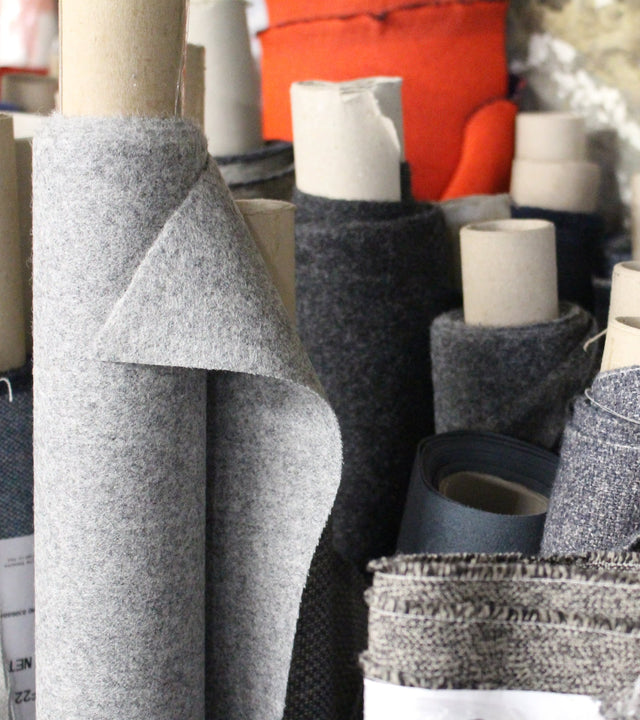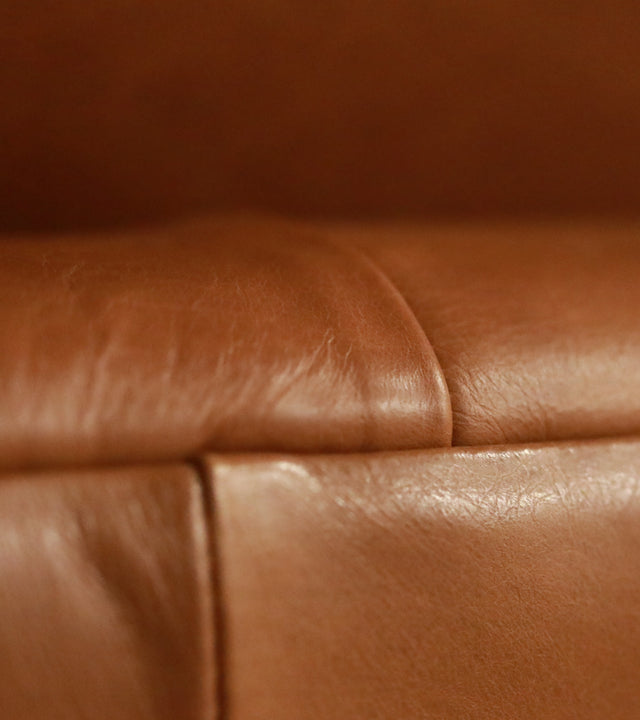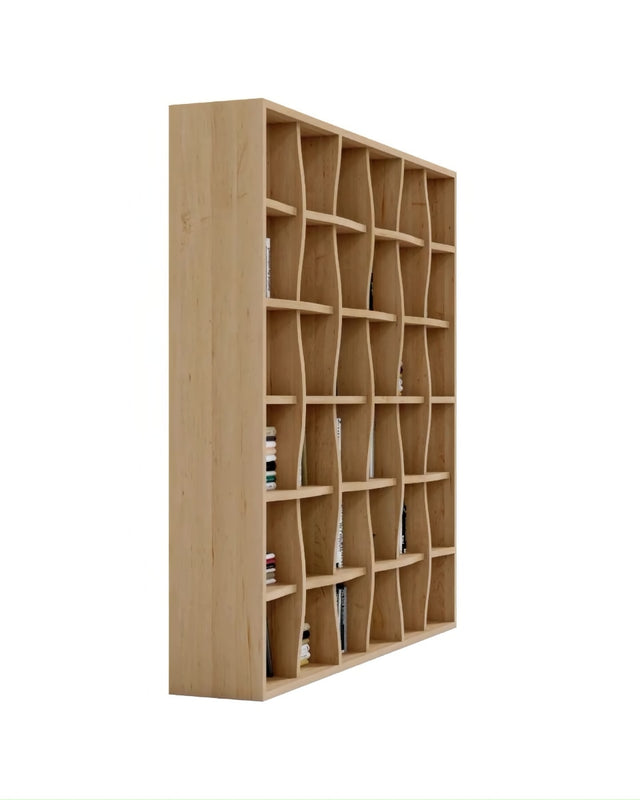CARE GUIDANCE
A little love goes a long way...
With a little care and attention your Sāthē products could well provide a lifetime of service. Keeping surfaces clean of dirt and dust can keep them looking at their best for longer, and periodically inspecting and maintaining your pieces will mean you can watch them grow old with grace. To help you get the most out of your Sāthē pieces we have compiled the following guidance below, or you can view the information in PDF format by clicking here.
Wooden Furniture
Placement of Furniture:
- Avoid placing in direct sunlight. Daylight/UV light matures wood. Uneven exposure to sunlight could result in colour variations which are very difficult to remove.
- Avoid placing next to heat sources like radiators and wood burners. Strong heat sources can cause uneven dry areas in the wood, resulting in cracking or openings at the joints.
- Avoid placing in moist or humid conditions. Wood can absorb water causing the grain to swell and feel rough, or cracking and openings at the joints. The ideal relative humidity for solid wood furniture is between 30-60%.
- Hot or cold, dry or damp environments can effect your furniture causing warping and cracking. As such it is vital you keep your furniture in a constant, well-maintained environment to ensure longevity.
Usage:
- Wood changes colour with exposure to both natural and artificial light. To avoid patches and discolouration periodically move or rotate anything placed on your furniture to avoid patches of colour where an object has been placed. This is particularly important in the first 8-12 weeks, to give the wood chance to initially mature.
- If you have an extendable dining table, leave it fully extended when possible or expose the leaves to light to minimise any obvious colour discolouration between them and the rest of the table.
- Wooden furniture is not waterproof, so remove any moisture from surfaces as quickly as possible. Do not let liquids sit on surfaces for any period of time as they may warp and discolour the surface.
- Wooden furniture is not heat resistant, so do not put hot crockery directly on any surface. These can mark or burn the surface, and degrade the finish faster. Always use an insulated placemat for protection, but do not use those containing rubber derivatives as these could react with the finish.
- Wooden furniture is not immune to chemicals, so avoid cleaning agents and other non-neutral chemicals which may effect the surface of your furniture.
- Sharp objects, such as cutlery, pens and buttons on the backside of your jeans, can mark the surface of your furniture, as can crockery being dragged across the top.
- Leaning forwards or backwards on wooden chairs and stools will weaken their joints.
Cleaning Basics:
- The wood oils and hard waxes we use on our furniture provide a semi-permeable finish, so some liquids can penetrate the surface.
- Liquids that stain or are insoluble in water should be wiped away as quickly as possible. They should be cleared away using a clean, damp, non-abrasive cloth, and then a clean dry cloth should be used to remove any excess moisture.
- Be gentle with your furniture and do not use abrasives, chemical cleaners, bleach, vinegar, lemon juice, scouring powders or other cleaners containing acids as these will remove the protective layer of oil and may damage or discolour the surface.
- Some furniture polishes (especially silicone spray polishes) are unsuitable for use and can degrade the furniture’s protective layer and cause a build-up of a silicone film. If you must use please test on a hidden, inconspicuous area and leave for 72 hours before reviewing and deciding whether to proceed.
Daily Cleaning:
- To remove any dust use a warm, slightly damp soft cloth.
- For daily use we recommend Osmo ‘Spray Cleaner’ or Fiddes ‘Wood Surface Cleaner’.
- We also advise periodic use of Osmo ‘Wash & Care’ as it contains soaps and oils to both nourish and prevent the wood from drying out. This will also prolong the oil finish and maintain it’s resistance to stains.
Quarterly Maintenance:
- If your furniture has an oiled or stained finish every 3 months polish the surface with good quality, natural beeswax polish or a coat of WoodSilk (non-silicon based treatment). Clean the surface with a damp cloth, leave to thoroughly dry, apply the polish sparingly and then buff along the grain with a clean duster. Allow 12 hours to dry and then repeat with 2 more coats. Taking care of your furniture in this way ensures the finish remains as resilient as possible to staining and wear.
- Caution: Oily cloths and sponges can spontaneously ignite, they must be kept and disposed of inside an airtight metal or glass container.
Scratches and Marks:
- Light scratches and marks should be fixed prior to any reapplication of oil.
- These can be removed by lightly sanding the area in the direction of the grain using a sanding sponge of fine sandpaper (180 grit or higher).
- Finish using 240 grit sandpaper still in the direction of the grain.
- Clean away any dust thoroughly before refinishing using the oiling process mentioned in “Quarterly Maintenance”.
- Important: To remove stubborn stains or recondition the surface of the wood we always recommend consulting a specialist or contacting us directly for further advice.
Fabric Upholstered Furniture
Placement of Furniture:
- Avoid placing in direct sunlight or next to strong heat sources as fabrics can fade or discolour.
Cleaning Basics:
- Do not use washing up liquid, detergents or bleach to remove stains.
- Before using specialist upholstery cleaning products, read the manufacturer’s care instructions and test on a hidden area of fabric.
- If the spill is oil or grease-based, we recommend using a specialist professional cleaning service.
Day to Day Care Of Sāthē Supplied Fabrics:
- Dirt and dust can cause fabrics to prematurely wear and discolour. This can be avoided by cleaning with an upholstery brush, or vacuuming with a small brush attachment (e.g. curtain attachment) on a regular basis. Do not forget to vacuum beneath each seat cushion.
- Be sure to clean all loose covers at the same time to prevent any variations in colour.
- For maximum comfort and to keep your upholstery looking great, plump and straighten back and seat cushions frequently and rotate, where possible, to ensure even wear.
Day to Day Care Of Customer Specified Fabrics:
- Refer to the individual fabric company’s own guidance.
Emergency Cleaning/Stain Removal:
- When accidents happen act quickly. Do not rub or soak the fabric, or allow the stain to set in.
- If the spill is a liquid dab the effected area with a clean, white absorbent cloth. Try not to spread the liquid or push it into the fabric.
- If the spill is a solid, remove the excess with a spatula or blunt palate knife being careful not to spread it about. Once the solids are loose carefully remove and then dab the stain.
Annual Cleaning:
- We recommend that your fixed-cover fabric sofas and chairs be professionally cleaned at least once a year.
Specialist Cleaning:
- We recommend that any major cleaning be undertaken by a professional upholstery cleaning specialist.
- The effectiveness of professional cleaning will depend on the degree of soiling, so be sure to have your upholstery cleaned before the material becomes too deeply soiled.
- Do not wash cushion covers or use a launderette’s dry cleaning machine without seeking professional advice.
Leather Upholstered Furniture
Placement of Furniture:
- Avoid placing in direct sunlight or next to strong heat sources as this can cause the leather to discolour or dry.
Cleaning Basics:
- As leather is naturally absorbent do not use washing up liquid, detergents or bleach to remove stains as these will spoil the leather.
- Similarly, do not use abrasive cleaning products as these could damage the leather and surrounding wood surfaces.
- Before using specialist upholstery cleaning products, read the manufacturer’s care instructions and test on a hidden area of fabric.
Day-To-Day Care:
- Remove any dust with a clean, soft, white cloth, slightly dampened with pre-boiled water cooled to room temperature. Avoid soaking any areas. Always keep a cloth specifically for leather furniture and keep away from soaps and detergents as these may damage the leather.
- Vacuum weekly at a low setting to remove dust and dirt, especially from under the cushions. Use a soft brush attachment to avoid damaging the leather.
- Do not use spray polish or any detergents as these may damage the finish.
- For small marks, carefully dab with a clean, lint-free cloth, and vacuum using the small brush attachment.
- For more pronounced marks, please refer to a professional leather cleaner.
Emergency Cleaning/Stain Removal:
- Liquid spills can be blotted with a dry cloth or kitchen paper. Be careful not to rub the area as this could damage the finish and cause discolouration.
Metal Furniture
Placement of Furniture:
- Avoid placing in direct sunlight or next to strong heat sources as this can cause discolouration.
Cleaning Basics:
- All our metal furniture are powder coated to protect the metal from rust and provide an aesthetic appearance. Powder coatings can be damaged by chemical agents so only use mild, soapy water to clean surfaces. Take a clean, soft cloth or sponge, lightly dampen in the soapy water and then gently rub the affected area. Thoroughly dry afterwards with a soft cloth.
- Do not use abrasive materials as this will scratch the surface.
- All spills should be cleaned immediately to avoid issues of discolouration or rusting.








